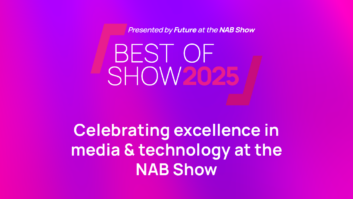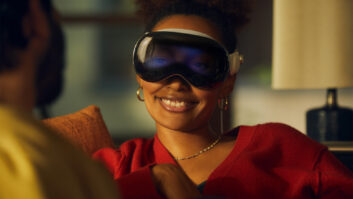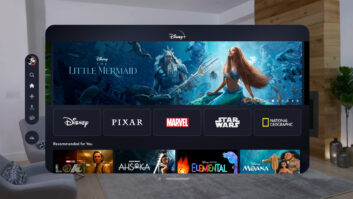At NAB Show 2024, Grass Valley CTO Ian Fletcher demonstrated the Master Control Room (MCR) of the future using the Apple Vision Pro headset. Fletcher described his demo as “a little flavour of what the future holds.” But for Norway’s public service broadcaster NRK, that future is now.
Last summer the broadcaster trialled producing a four-hour livestream of the Norwegian Broadcasting Council’s annual meeting using Apple Vision Pro headsets, making it the first broadcaster to produce a live event using the technology, according to Apple. All four members of the production team used headsets, one to control PTZ cameras, another to add graphics and text, the third to look after the sound and the fourth to edit and produce the broadcast.

The driving force behind the project was Erik Løvgren, head of innovation in NRK’s production department, who came up with the idea the very first time he tried an Apple Vision Pro. “I’ve tried different VR headsets before, and I’ve found them not very useful,” he explains. “As soon as I tried the Apple Vision Pro and we started testing and putting different screens on the wall, I thought, oh, this reminds me of the MCR.”
This triggered the question, could NRK get the signals it needed into the headset, manipulate them, and turn Løvgren’s idea into reality?
The good news was that there was already another team at NRK who had developed a web page VMIX that looked like a multiviewer. “Their overlay lets you push the buttons with your eyes or by finger snaps. So we got a head start on that.”
What made Løvgren’s test different is that the team created their own server using WebRTC, and developed an app using SwiftUI. This meant that as soon as the signals entered the headset they could be manipulated rather than sit as webpages. “That made us able to move things, and we could get more sources in, such as audio and graphics,” he explains.
“We bypassed the regular MCR, it was sort of cheating. We found that we wanted to test the user side of it, not the tech of getting this into our systems. But as more multiviewers and MCRs are going software-based, I think it’s going to be quite easy to replace the monitors with this.”
Anyone who works in TV knows that live has to be right, and even if you’re taking a chance by trialling something new, you need to have redundancy in place in case anything goes wrong. “We had backup on each station,” explains Løvgren, “the guy looking after the PTZ cameras had his regular remote controllers and we had some Stream Decks if we needed some buttons. It was quite easy once we got started, and since we had the backup, we could always pull up a monitor if we needed to.”
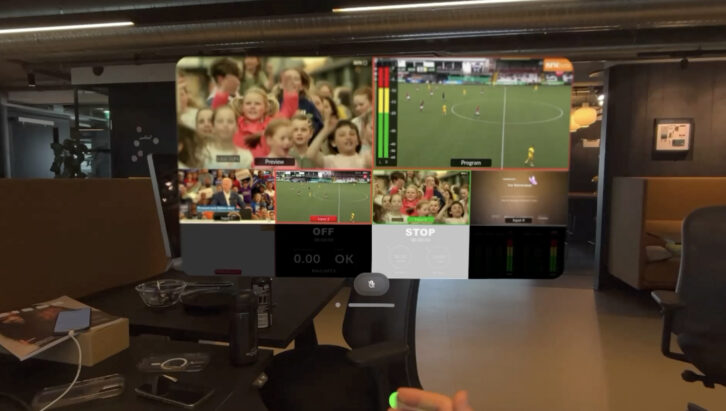
The project led to some unexpected discoveries, particularly around audio. The engineer was using a software-based audio mixer on his headset. This meant he could “walk around” and see the signal turn on each microphone, which was not part of the original plan. Following the success of the live stream, NRK has held discussions with Apple but is waiting to see how the giant intends to develop the Vision Pro. “Since this is the first release of the headset, it’s sort of a beta version,” states Løvgren.
However, that doesn’t mean the broadcaster wouldn’t consider using the technology again, and it has been in discussions with other Scandinavian media companies such as Sweden’s SVT about collaborating on a project. “We want to use the glasses as an excuse to have a little fun collaboration and see how far we can stretch the scope. We just have to find the time.”
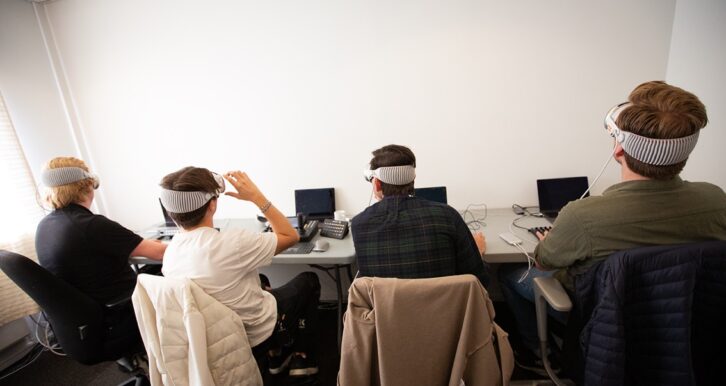
Løvgren says he can see a time when broadcasters could make the move from a traditional MCR with multiviewers to using virtual reality headsets, but he doesn’t think it’ll be immediate. “Broadcasting is so conservative so, maybe not yet,” he states. “But just think about what a monitor costs. Compared to the infrastructure needed, I think some sort of glasses are the way to go to make it easier to do smaller MCRs or control rooms if you need a quick setup. The possibilities are endless. Everyone’s going to IP and software so, why not? Why are you bound to the traditional set of screens?
“I don’t know if Apple Vision Pro is the answer, but I think this disrupts a little bit and changes the mindset,” he concludes.
This article originally appeared in the April issue of TVBEurope, which can be downloaded free here
